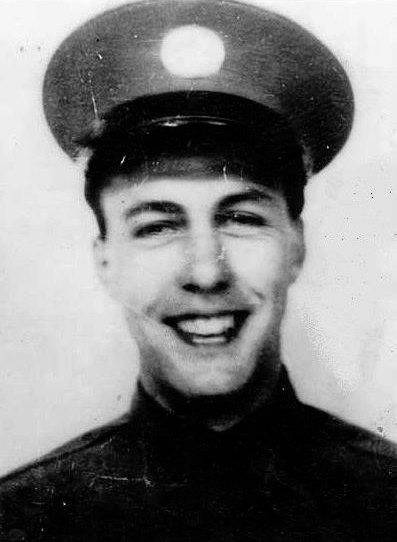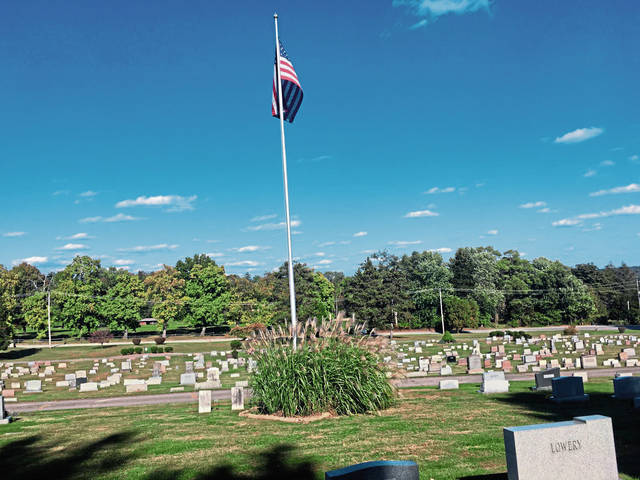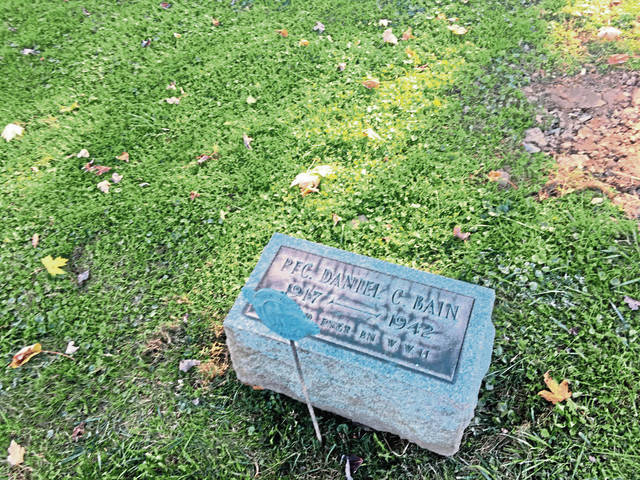Remains of WWII vet from Sutersville returning home - again
Seventy-seven years after he died in a notorious Japanese prisoner of war camp, a World War II soldier from Sutersville is home again and set to be buried in an Elizabeth Township cemetery.
The remains of Pfc. Daniel Bain were accompanied by a military escort as his casket was flown from Hawaii to Pittsburgh on Monday, said Jeannette Gray, case manager for the Past Conflicts Repatriations Branch of the Army Casualty and Mortuary Affairs Operations Division.
A military honors team escorted Bain’s remains to the J. William McCauley Jr. Funeral Home in West Newton. At the family’s request, a private funeral service is scheduled Wednesday in Sutersville, and Bain will be buried with full military honors in Mt. Vernon Cemetery.
Bain, who was a Pittsburgh Coal Co. miner before joining the peacetime Army in March 1941, will be escorted by a fire truck to Mt. Vernon Cemetery, Sutersville fire Chief Mark Ghion said. Bain was a Sutersville fireman when he went into the Army, Ghion said, and the department’s rules state any member will remain on the roster until they complete their first enlistment or until the war is over.
”As far as the fire department is concerned, he’s still serving and we are carrying him on our roster as a life member,” said Ghion, who has conducted extensive research on Bain and 13 other Sutersville natives who died in World War I, World War II and the Korean War.
Bain’s journey
Bain’s story reflects the difficult task the Army can face when identifying the remains of soldiers.
Bain was a member of the headquarters company, building bridges, roads, gun emplacements and air strips on the Bataan Peninsula in the Philippines, Ghion said. Bain was among about 76,000 troops, including 12,000 Americans, who surrendered in April 1942 after month of attack by Japanese forces, which started after Japan’s surprise attack on the Navy fleet at Pearl Harbor on Dec. 7, 1941.
The American and Filipino prisoners were taken on a 65-mile forced march that became known as the Bataan Death March, where prisoners were beaten and bayoneted by the Japanese. At the prisoner of war camp at Cabanatuan, they were malnourished and subject to beatings.
When Bain died Nov. 19, 1942, of plegaria, a form of malnutrition from Vitamin D3 deficiency, Gray said he was buried in a mass grave along with 13 other American prisoners. Mass grave burials were a common practice at the camp, she said.
After the camp was liberated in a famous raid in January 1945, the bodies were exhumed. Bain was identified with a name tag, Gray said, but most of the other prisoners had been identified only with a slip of paper that disintegrated in the mass grave. That created confusion when teams separated the remains to be identified, Gray said.
The remains were removed to a temporary cemetery in Manila, Philippines, then were disinterred in 1946, Gray said. The remains of Bain and three other soldiers were identified and moved to another location to be taken home. Bain’s remains were first buried in Mt. Vernon Cemetery in May 1949, said Pete Kurka, Mt. Vernon Cemetery caretaker.
Armed with technology not available in the 1940s, the Defense Department re-analyzed the remains of the 10 unidentified soldiers in 2014 and found some of the bones had DNA matching Bain and the other soldiers whose remains were returned home after the war, Gray said.
“There was a mix-up (in 1948). They used the best method available to them” at that time, Gray said.
With the permission from Bain’s family, he was disinterred in 2016, and another bone analysis conducted at an Army forensics laboratory in Honolulu determined some of the remains belonged to other soldiers, Gray said.
“We have to go back and correct those mistakes,” Gray said, noting the Army is conducting further tests in Manilla on the remains of the 10 soldiers in an effort to determine their identities.
Joe Napsha is a TribLive reporter covering Irwin, North Huntingdon and the Norwin School District. He also writes about business issues. He grew up on Neville Island and has worked at the Trib since the early 1980s. He can be reached at jnapsha@triblive.com.
Remove the ads from your TribLIVE reading experience but still support the journalists who create the content with TribLIVE Ad-Free.




